By ADRIAN PENNINGTON

By ADRIAN PENNINGTON

The U.K. visual effects scene has never been more exciting, nor more uncertain. The bonanza of feature and TV production on the island shows no sign of abating with facilities and studios in the capital and across the U.K. close to bursting, even while the country’s pending departure from the EU threatens to derail the economic progress of the industry.
Figures released from the British Film Institute show that 2017 was the largest year on record for international spending in the U.K., with film leaping by 23% from 2016 to $2.4 billion, propelled by shoots for blockbusters like Ready Player One, Tomb Raider, Jurassic World: Fallen Kingdom, Solo: A Star Wars Story and Mission: Impossible 6. Meanwhile, TV rocketed 27% to $967 million.
But it’s not just about volume. The scale and complexity of visual effects is at an all-time high, driving multiple VFX hubs across the world, with London the indispensable axis. Six of the last eight VFX Oscars have gone to British shops.
“The most demanding work is being placed in the U.K., not only because it is very competitive with the rest of the world, but because we have a very mature infrastructure and world-class talent pool,” says Cinesite’s Director of Animation, Eamonn Butler.
“As much as we’ve grown elsewhere, the U.K. remains the largest part of our global operation for film and VFX,” says Matt Fox, Joint Global MD at Framestore, 2018 Oscar winner with DNEG for Blade Runner 2049. To cope with the amount of work, Framestore opened bigger offices earlier this year, a short walk from Soho, adding another 100 artists to bring its total U.K. staff above 1,000.
“London’s massive pull is testament to the richness of artistic talent available to us,” says Philip Greenlow, Executive Producer, MPC Film. “The city has always drawn a large workforce from the U.K. and Europe, and the depth and breadth of skills they possess in computer graphics cannot be overlooked.”
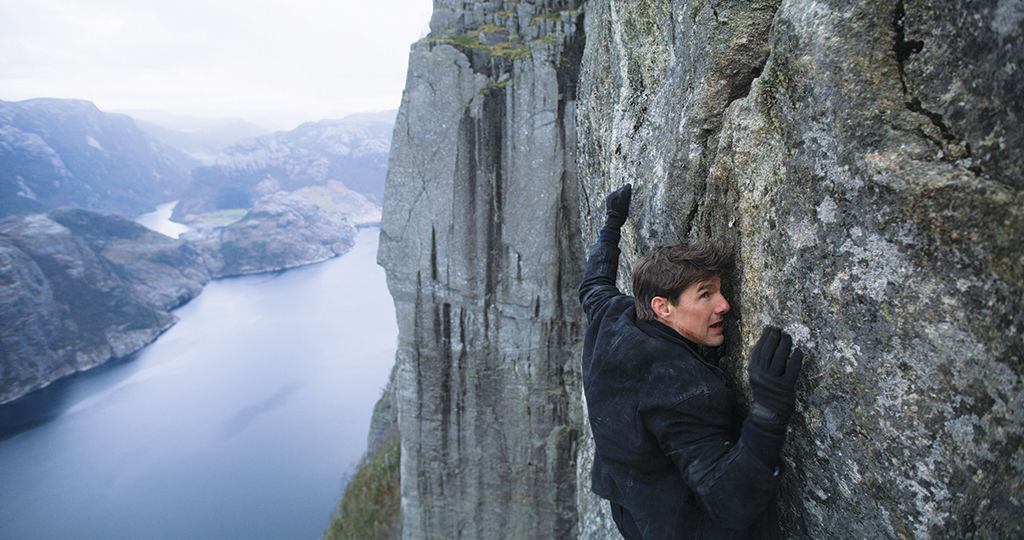

The U.K.’s digital prowess emerged on the back of a strong physical production presence stemming from a period in the late 1970s when films like Star Wars, Superman and Alien shot at Pinewood.
“The directors making those movies were among the first to seed the idea of visual effects as part of the filmmaking process as opposed to a post service,” says Fox. “It also positioned the U.K. culturally as a place where production and post disciplines merge.”
During the decade between the first and last Harry Potter films (2001-2011), the U.K.’s VFX grew from cottage industry to global powerhouse, as more and more work traditionally destined for the west coast of America was channelled to London.
“In L.A., Mumbai or Beijing there’s a great respect for the level of polish and finishing that our VFX community is able to put on a production,” says Will Cohen, CEO at Milk.
The English language plays a part, of course, as does London as a vibrant city where senior creatives want to spend time. Soho’s geography remains unique with all the facilities, screening rooms and networking available in a buzzing square mile. The cluster of studios on the outskirts of the capital is unrivaled, with even more stages – including a major 20-acre site in East London run by California’s Pacifica Ventures due in 2020.
However, it is the supportive fiscal environment, in place since 2007 and available at 25% of qualifying film production spending in tax credits, which underpins the dramatic surge.
“Other tax rebates may pop up, but what is incredibly important is the stability of the U.K. tax regime,” says Fox. “Financiers and filmmakers don’t want to invest and then not receive the support they were promised.”
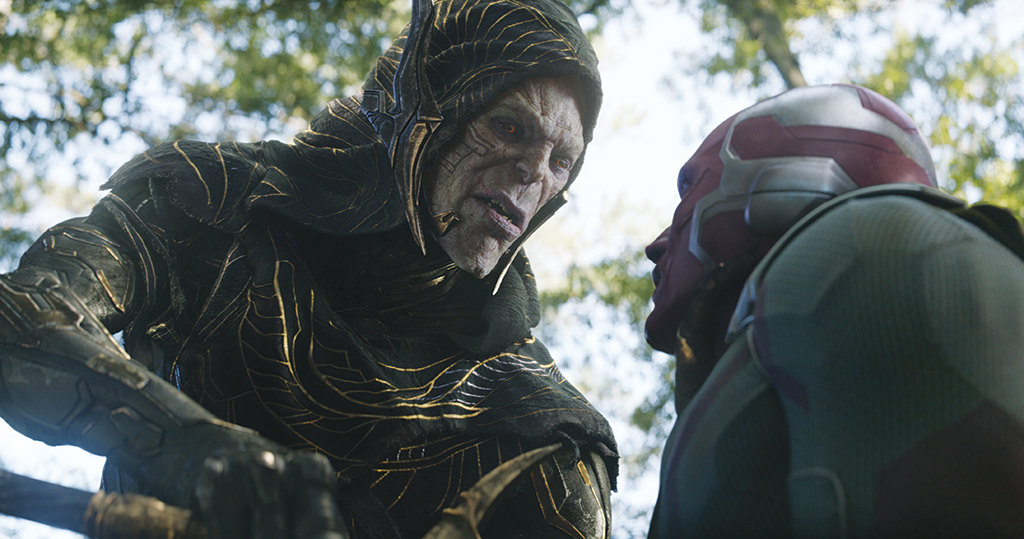
“Films not shot in the U.K. are able to pass the qualification criteria for U.K. tax credit, and therefore gain access to the wealth of talent and technology resources here.”
—Alex Hope, MD/Co-founder, DNEG

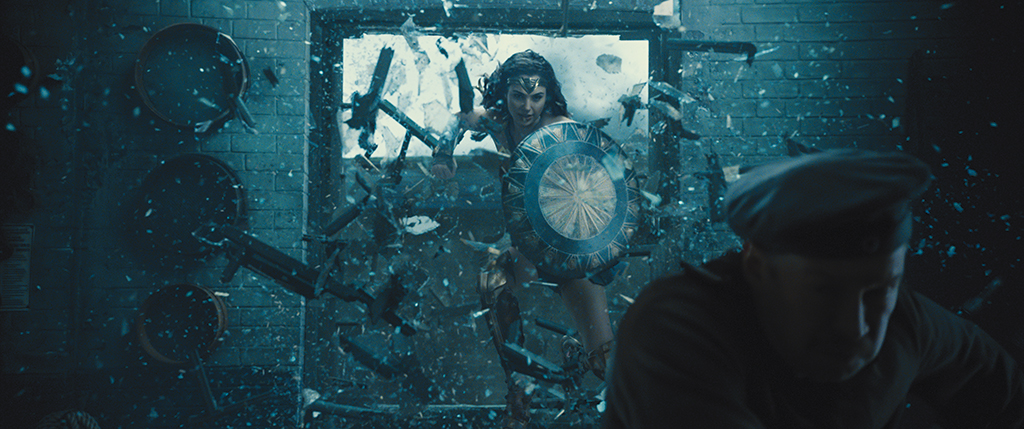

An amendment in 2014 encouraged producers with a VFX budget of 10%-25% of the total project budget to come to the U.K. for their visual effects.
“Films not shot in U.K. are able to pass the qualification criteria for U.K. tax credit and therefore gain access to the wealth of talent and technology resources here,” says Alex Hope, Managing Director and co-founder of DNEG.
Pacific Rim Uprising and Sony’s Marvel adventure Venom, are two recent examples of films shot outside the U.K., with editorial and sound post in L.A., but VFX supervised and completed in the U.K.
“It’s difficult to convince artists to stay in a location if they don’t perceive there will be long-term work there for them to do,” adds Fox.

Demand has heightened even further thanks to Brexit. A 25% drop in the pound against the U.S. dollar since the June 2016 EU Referendum has made production much cheaper for U.S. majors. Meanwhile, the unprecedented volume of high-end drama being commissioned by Amazon, Netflix, HBO and Starz – in turn prompting U.K. networks like Sky to up their game – has put demand for homegrown VFX talent at an all-time high.
The global success of Game of Thrones, for example, has put Northern Ireland’s studio, location and crewing facilities on the map. HBO has so much confidence it wasted no time booking the spin-off into Belfast’s studios.
U.S. vendor Stargate has also tried to tap into the U.K., although its Ealing studio is serviced from an outpost on Malta.
Another characteristic of U.K. VFX is that supervisors can call on a raft of specialities from an array of smaller facilities to supplement the shots handled by the mega-shops.
Jellyfish Pictures, for example, has been engaged by ILM London for the last three Star Wars outings, including 150 shots on Episode VIII: The Last Jedi. That showcase helped it become principal vendor for Focus Features’ sci-fi Captive State, shot in Chicago by director Rupert Wyatt. “They wanted a company that was able to work flexibly without the runaway costs of the really big guys,” says Jellyfish CEO and co-founder Phil Dobree.
Boutique Atomic Arts was tasked with set extensions and crowd replication for Disney’s Dumbo. Lola was one of a number of facilities working on space thriller Life, for which DNEG held the lion’s share. “We’re often brought in near deadline to work on a particular scene as a safe pair of hands,” explains Creative Director Rob Harvey.
Working on scenes for Jason Bourne and Nocturnal Animals (where it performed digital de-aging on Amy Adams and Jake Gyllenhaal) helped Outpost gain attention, believes founder Duncan McWilliam. It recently landed shots on Jurassic Park: Fallen Kingdom.




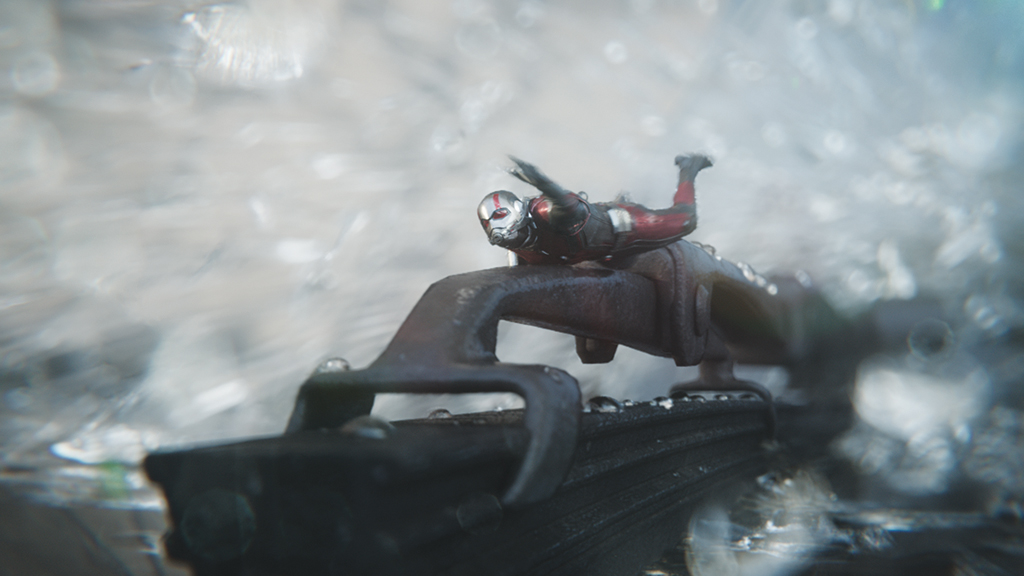

Exploring exotic or alien worlds, or talking with animals, has always been coveted in storytelling, and now the technology has caught up to be able to realize those tropes more convincingly.
“A maturation of CG software – a lot of which is the product of in-house proprietary development – means that films comprised mostly of CG creatures are more scalable to schedules and budgets,” says Greenlow.
MPC recently launched a new character design and build department in London. The ‘Character Lab’ features modeling, texture, rigging and groom specialists working on Dumbo, The Voyage of Doctor Dolittle and The Lion King.
The 54 species of animals and 224 unique animals, which MPC put on screen for Jon Favreau’s VFX-Oscar winner The Jungle Book, is being advanced further for Disney’s follow-up.
“All of those complex photoreal CG characters require an exceptional eye for animation, and we’ve benefitted from a wealth of talent across the U.K. and Europe’s flourishing TV and feature animation industry,” says Greenlow.
Framestore completed the bulk of the 1,110 shots for Paddington 2 and was responsible for animating another bear for Marc Forster’s Christopher Robin. Along with Pooh, the facility provided initial concept design for Tigger, Piglet and Eeyore, and animated these as full-CG characters interacting with real-world environments and actors.
More hero creature work, plus environment extensions and magic wand effects, comprise the 330-shot order made at Framestore London for Fantastic Beasts: The Crimes of Grindelwald. Digi-doubles and environment work of a London park are part of its 599 shots for Mary Poppins Returns.
“Filmmakers are not just using VFX to blow an audience away, they are using it to communicate sophisticated emotions and complex ideas,” says Butler.
He describes a new generation of filmmakers that have grown up watching movies with “detailed understanding” of the craft for shaping stories using visual effects in ways that were not present before. “Studio’s aren’t afraid to back them with budgets either,” he adds.
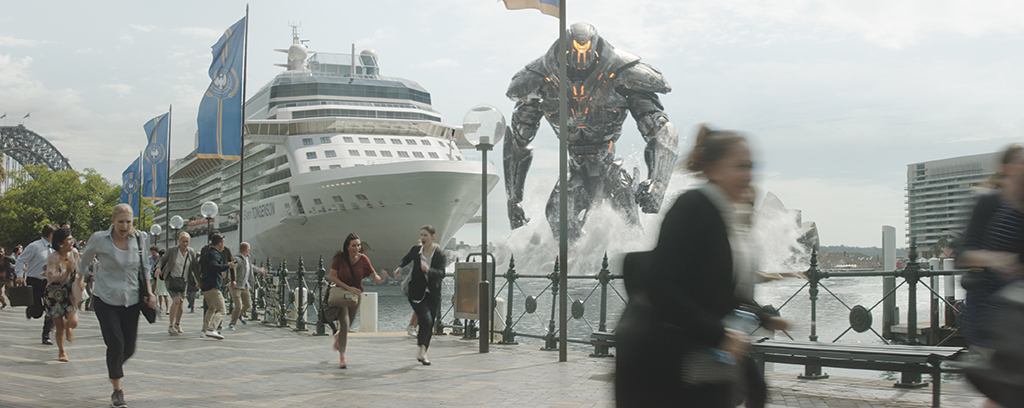

The sheer amount and variety of work coming into the country means there’s no difficulty finding crew or scaling up with world-class craft skills.
“We can cherry pick the best talent from around the world to do specialist shots rather than overloading one facility,” says Christian Manz, VFX Supervisor on Warner Bros.’ Fantastic Beasts series. “By plugging into different cultures, you get different ways of working. You get a European sensibility.”
There’s also the peculiar British character to consider. “Brits have historically been good at science, invention and art, but we’re naturally very reasonable when it comes to settling and solving problems,” says McWilliam. “When budgets go wrong and shots aren’t going according to plan, we offer a polite calmness rather than hot-headedness, which does not go unappreciated.”




The U.K.’s departure from the European Union is timed for this March, with uncertainty about its impact looming large in the sector. That’s chiefly because Brexit is designed to curb the movement of labor, and when the U.K.’s VFX community is built on attracting the best overseas talent, the cost and volume of red tape for visas could impact competitiveness.
“Foreign talent has a critical role to play in U.K. skills development,” says DNEG’s Alex Hope. “My concern is that any changes to visa costs and its scope will impact this.”
A third of the 6,000 artists employed at U.K. VFX houses are from the European Union or European Economic Area (excluding the U.K. and Ireland) and 13% from the rest of the world.
Union VFX is typical. A quarter of its workforce is from the EU; many are specialists who need to be hired quickly to work on new projects. “If they were to become subject to [visa-restrictive] rules, our business would be severely impacted,” says co-founder Adam Gascoyne.
There’s a risk that projects could transfer overseas with larger facilities. Those [companies] with offices in Montreal or L.A. are threatening to uproot HQs from Soho. Cinesite’s acquisition of Berlin-based studio Trixter last August could see projects shift from the U.K. to Germany. Smaller houses don’t have the ability to withstand such as a challenge, but some are preparing contingency measures to compete. Jellyfish has built a virtualized production hub with which it currently connects its two London offices, but could be extended anywhere with a high-speed connection.
“This will enable us to bring in artists to work remotely on projects from anywhere in the world,” says Dobree.
Efforts are also being made to boost the skills and the number of locally-trained graduates to fill the post-Brexit gap.
With typical British resolve, most executives remain upbeat about long-term prospects, given the economic value which post-production and VFX in particular generate for the U.K. government.
“The quality of work the U.K. produces is a function of the multi-cultural influence of our talent,” says Mark Benson, CEO of MPC. “Any change in our ability to engage with talent post Brexit could represent an issue. As an industry, it is important we make that crystal clear.”
Warner Bros., for one, has no qualms. It has a major new 25,000-square-foot post-production facility opening in Soho by 2021 which will be “on a scale to rival those in Hollywood,” according to the studio.
Motion capture is increasingly used with CG animation, especially to create bipedal characters, but the bigger advance is closer integration with real-time render technology, to better visualize and drive performance capture.
U.K. facilities and native world-renowned VFX tool developers like Foundry are leveraging game-engine technology to visualize the action in real-time. In doing so they are opening up to ‘hybrid filmmaking,’ where directing entirely or largely digital scenes can be approached using traditional techniques.
“Motion capture can be input almost instantly to the VFX pipeline,” says Cinesite’s Butler. “There’s no down time waiting on data to be cleaned up, so a director can be more interactive in finding the best angles.”
MPC’s immersive filmmaking platform is called Genesis, inside of which environments can be scouted, designed and dressed, and characters can be directed.
“This facilitates a much tighter feedback loop on set, informing all aspects of the final shot,” says Greenlow.
Actor/director Andy Serkis has taken hybrid filmmaking to new levels for Mowgli. Facial, vocal and physical performances were captured as CG assets at Warner Bros.’ Leavesden Studio then reworked, animated and rendered at Framestore. The majority (851) of the 1,164 total shots were created in London.
Framestore and Imaginarium, Serkis’s west London performance-capture studio, developed a new muscle system to allow animators to more directly replicate facial shapes and expressions.
“The balance between the essence of an actor’s performance and the animator’s translation of that to create the final CG character is finely crafted here,” explains Matthew Brown, Imaginarium’s CEO. Adds Framestore’s Matt Fox, “There is something incredibly recognizable in the character’s facial performance that is down to that mixture of translating performance capture into a muscle system in order to build the anatomical features of an animal’s face, which is where the technology has advanced.”
Automatik. Five-year-old boutique based in London and Berlin provides a full palette of digital image creation. They provided extensive previs for The Imitation Game, with Look Away, starring Jason Isaacs, in production. www.automatik-vfx.com
Atomic Arts. Produced virals, trailers, clean-up, roto and environments work across its London and Mumbai offices for Red Sparrow, It, Alien Covenant and others, with full-blown VFX for The Martian (via MPC) and 400 shots on Netflix series Altered Carbon. www.atomicarts.net
BlueBolt. Smaller house that mostly provides winning high-end TV work, but is regularly called on for additional shots in larger movies, such as Mission: Impossible – Fallout and Mamma Mia! Here We Go Again. Compositing, CG and digital matte painting are core skills. www.blue-bolt.com
Cinesite. One of the big four U.K.-headquartered businesses with a legacy of Bond and Potter franchises, this former Kodak facility has been owned and run by U.K. management since 2012. Acquisition of Canada’s Image Engine Design and Nitrogen Studios, plus Germany’s Trixter, fueled overseas expansion and work on studio titles like Ant-Man and the Wasp. Its Montreal branch majors in feature animation (The Addams Family). www.cinesite.com
DNEG. Already one of the world’s largest VFX companies before its 2014 merger with Prime Focus World, this powerhouse operates multiple studios in North America and India, employs 5,000, and is likely to have a hand in many blockbuster shows. Favored by Christopher Nolan, DNEG has Alita: Battle Angel and Joe Cornish’s The Kid Who Would be King. Its TV wing recently won series work on Doctor Who. www.dneg.com
Framestore. Respected worldwide for its innovation as much as for its final-shot polish, past credits include The Golden Compass and Gravity. In-production shows include Captain Marvel and The Crimes of Grindelwald. With multiple offices worldwide, including a VR studio in New York City (and majority-owned by Chinese investors), it has a year-old TV division, with work for BBC series His Dark Materials in the works. www.framestore.com
Jellyfish Pictures. Principally an episodic TV animation house, this stalwart facility has flourished by investing in film and TV. It played a key postvis role on Rogue One: A Star Wars Story, eventually picking up half the shots. www.jellyfishpictures.co.uk
LipSync. Full-service facility offering previs, concept, matte painting and 3D, its credits include The Nice Guys, Mr Turner and BBC period drama Wolf Hall. www.lipsyncpost.co.uk
Lola. Respected boutique delivering conceptual art and previs to final delivery. Completed 400 4K shots for BBC/Netflix show Troy: Fall of a City and regular set extensions for Ripper Street. Feature work includes John Carter and Life. www.lola-post.com
Milk. Launched five years ago by former Mill Film artists to concentrate on high-end TV, the facility grew rapidly on successive series of Doctor Who, and landed the 2016 Oscar for Ex Machina (with DNEG). Straddling both disciplines over Cardiff and London hubs with 250 full-time staff, its current projects include Four Kids and It. www.milk-vfx.com
The Mill. After trailblazing the U.K.’s first VFX Oscar for Gladiator, The Mill famously shuttered its film outfit to concentrate on the more profitable commercials sector – only to re-open it in Australia. Part of the Technicolor stable since 2015, the house has been consistently recognized by peers and clients as a premier visual effects provider – mainly for agencies – since launch in 1990, and also operates in New York City, L.A. and Chicago. www.themill.com
Molinare. Grand old dame of the Soho post scene, the VFX skill set of this 40-year-old full-service facility ranges from clean-up and compositing to 2D and 3D motion graphics, and effects on titles including Dad’s Army, Netflix’s The Crown, and the DI/grading for Isle of Dogs. www.molinare.co.uk
MPC. To its long-standing commercials VFX and grading specialties, the Moving Picture Company grew film work on the back of successive Harry Potter films, landing an Oscar for Life of Pi, another for The Jungle Book, and continues with work on Tim Burton’s Dumbo, The Lion King, Artemis Fowl and Shazam! to name a few. MPC is Technicolor-owned with studios in Bangalore, Montreal, Vancouver and L.A. www.moving-picture.com
One of Us. Sole vendor of 500 shots on Season 1 of Netflix’s The Crown, the house is proficient at handling sequences for features, including Widows, 22 July and Star Wars: The Last Jedi. www.weacceptyou.com
Outpost. Home to 80 artists located on the south coast, handy for Bournemouth’s VFX graduates, Outpost offers wide-ranging TV and film credits, including Jurassic Park: Fallen World and Jack Ryan for Amazon. www.outpostvfx.co.uk
Union VFX. Celebrating a decade in business, this mid-sized vendor’s core specialities include CG environment work and invisible effects. Favored by Danny Boyle (127 Hours, Trance, T2 Trainspotting), it also contributed to Three Billboards Outside Ebbing, Missouri and Annihilation. www.unionvfx.com
This is a brief guide to some of the most active effects studios in the U.K.